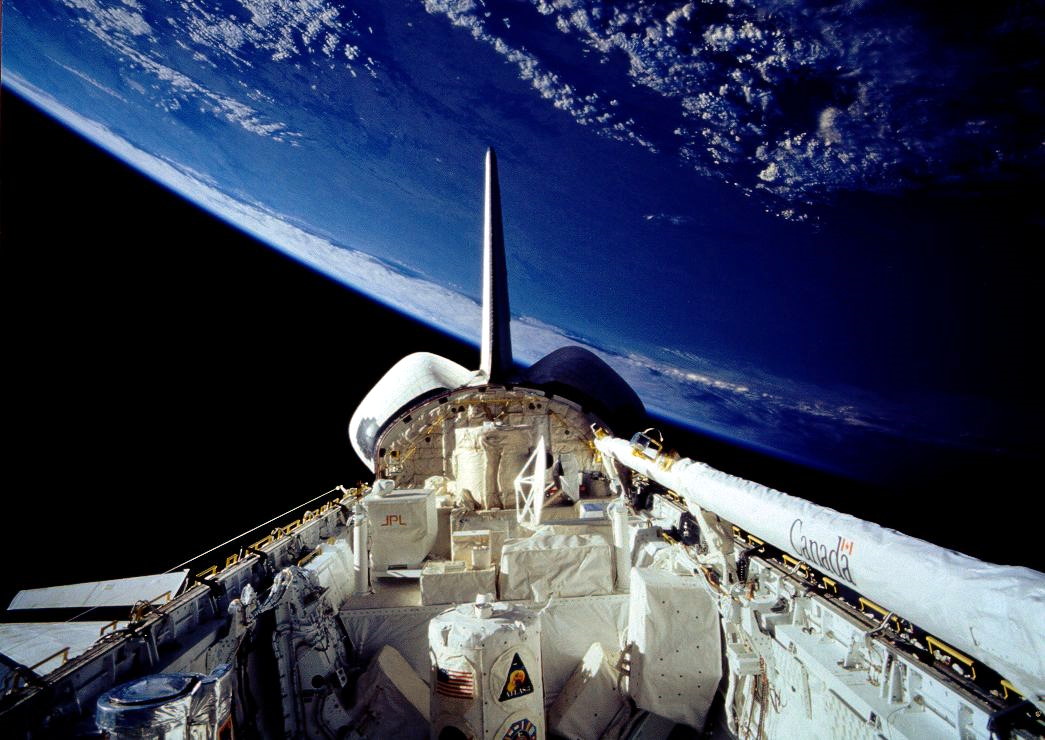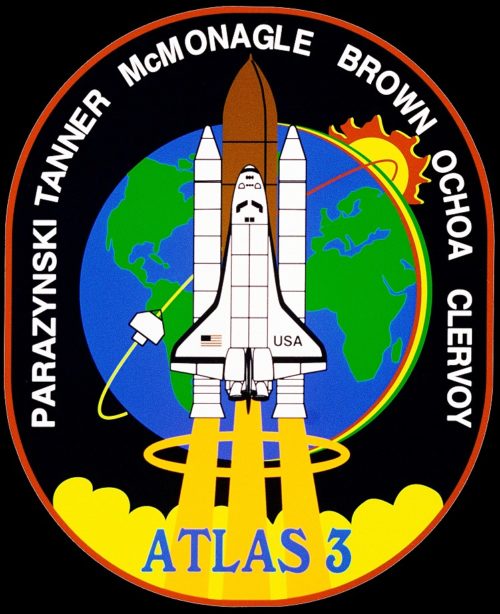
A quarter-century ago, today, the International Space Station (ISS) era began in earnest with the return-to-flight of Space Shuttle Atlantis, following a lengthy period of refurbishment. Since her STS-46 mission in July 1992, she had undergone many improvements to prepare her for voyages to Russia’s Mir space station and eventually to participate in building the ISS. Her return to operations on STS-66 in November 1994 marked the culmination of a remarkable few months, in which all four shuttles—Columbia, Discovery, Endeavour and Atlantis herself—spread their spacefaring wings. And when STS-66 launched on 3 November 1994, NASA accomplished its best-yet record in the post-Challenger era for launching three back-to-back shuttle missions in only 55 days.

In fact, the three-flight, launch-to-launch record of 55 days—which saw Discovery fly STS-64 on 9 September, Endeavour follow on STS-68 on 30 September, ahead of Atlantis’ own return on 3 November; a textbook example, if ever one were needed, of the muddle of shuttle mission designators which rarely ran in numerical sequence—would never again be surpassed. Only one occasion in the post-Challenger timeframe, in October-December 1990, did three shuttles launch within 57 days of each other; and even before Challenger’s calamitous loss, the all-time empirical record in October-November 1985 saw three missions fly in a 54-day period.
A seemingly minor sub-record, perhaps, but STS-66 topped a triumphant year for the shuttle program. At the dawn of 1994, NASA’s could bask in the glory of the previous December’s spectacular repair of the Hubble Space Telescope (HST) and went on to execute seven successful missions: two expeditions to radar-map Earth’s surface from low-Earth orbit, the longest shuttle flight to date, the first launch of a Russian cosmonaut on a U.S. spacecraft and the first untethered Extravehicular Activity (EVA) in almost a full decade. And during her 27 months on the ground since STS-46, Atlantis had been heavily upgraded to accept the components necessary to rendezvous and dock with Russia’s Mir. She was fitted with the first hardware elements for the Mir-compatible Orbiter Docking System (ODS), electrical provisions for the Extended Duration Orbiter (EDO) capability, better nose-wheel steering, improved plumbing and a drag chute to support landing and rollout operations.

STS-66 was originally slated to fly on 27 October 1994, but it was not to be. NASA needed additional time to refurbish three new Space Shuttle Main Engines (SSMEs) to replace those of Endeavour, whose STS-68 flight suffered a launch pad abort on 18 August; additionally, engineers needed to replace a scratched flight deck window and tend to Atlantis’ plumbing.
Principal payload for STS-66 was ATLAS-3, the third atmospheric laboratory for applications and science and the final flight in a series which was originally set to fly annually throughout the Sun’s 11-year cycle of activity. As NASA and Russia drew closer in the post-Soviet era and plans crystallized for a series of nine or even ten shuttle-Mir dockings in 1995-1998, several key payloads were axed, including several ATLAS missions. As late as January 1992, an ATLAS-4 flight was penciled into the shuttle manifest for late 1995, joined by a waves in space plasma deployable payload, but by the April 1994 manifest the mission was gone; to be replaced—at least for Atlantis—by a string of shuttle-Mir dockings. And although shuttle-Mir would prove a critical stepping-stone to the ISS, it has been lamented over the years that much potential science was lost by deleting or defunding so many promising research missions from consideration.

It was therefore apparent when Ellen Ochoa—veteran of the ATLAS-2 mission, who went on to become the first Hispanic director of NASA’s Johnson Space Center (JSC) in Houston, Texas—was named as STS-66 payload commander in August 1993 that ATLAS-3 would be the end of an era. In January 1994, she was joined by her five crewmates. In command of STS-66 was Don McMonagle, with Curt Brown as pilot and three “rookie” mission specialists: Joe Tanner, Scott Parazynski and Frenchman Jean-François Clervoy of the European Space Agency (ESA). In orbit, they would be split into two 12-hour shifts, with McMonagle leading the “red” team of Ochoa and Tanner and Brown leading the “blue” team of Parazynski and Clervoy.
The mission was set to launch at 11:56 a.m. EST on 3 November 1994, which offered “gentlemen’s hours” in terms of a 7 a.m. wake-up time for the red team. Alas, the blue team was less fortunate. They would be bedding down for the first sleep shift a few hours after launch and the pre-flight “sleep-shifting” regimen—according to McMonagle—meant that they were awakened late the previous evening, a full 14 hours before T-0. As things turned out, Brown, Parazynski and Clervoy would settled down for their first night’s sleep in space about three hours into STS-66, after a 17-hour “day”.
Launch was delayed slightly, as the Mission Management Team (MMT) discussed wind speeds at one of the Transoceanic Abort Landing (TAL) sites. Weather conditions at Zaragoza and Moron, both in Spain, proved initially acceptable, with Ben Guerir in Morocco classed as “marginal” for a time, in terms of out-of-limits crosswinds. Fortunately, the situations improved by T-5 minutes, at which point Brown was asked to activate the shuttle’s Auxiliary Power Units (APUs).
“CDR, hope you have a good flight,” the Launch Director cheerily radioed McMonagle, “and enjoy the new vehicle we’ve given you.”
“We thank you very much, and we’re sure we will,” came the reply from the shuttle’s flight deck. “We’ll see you in about 11 days.”
.
.
FOLLOW AmericaSpace on Facebook and Twitter!
.
.





